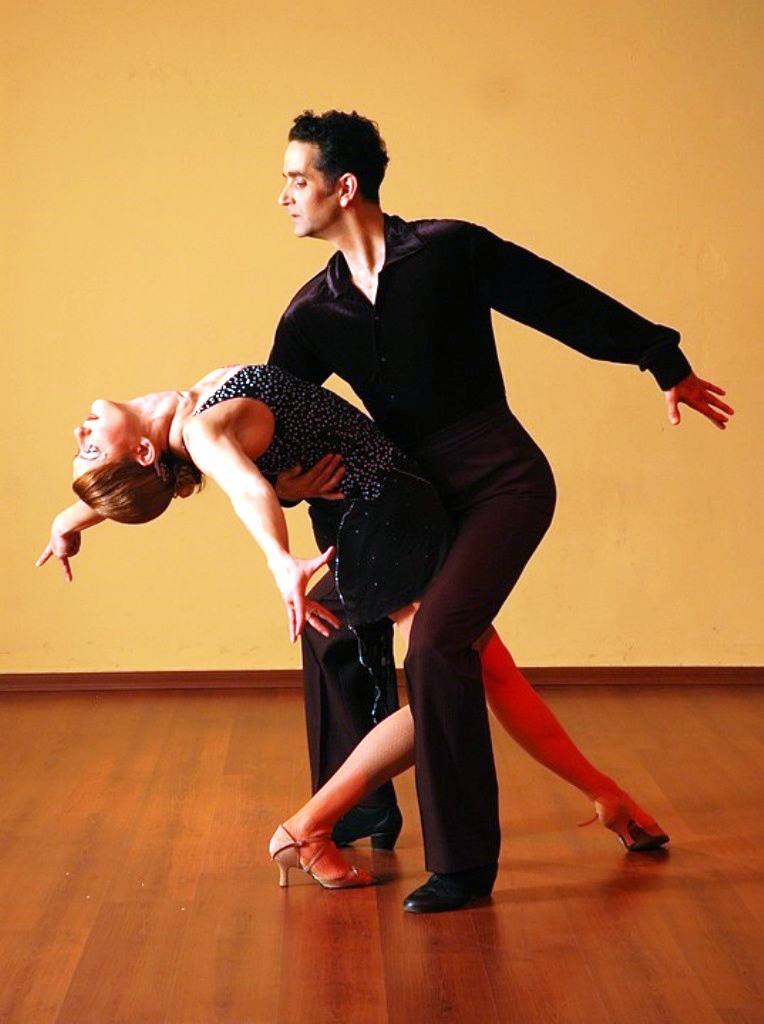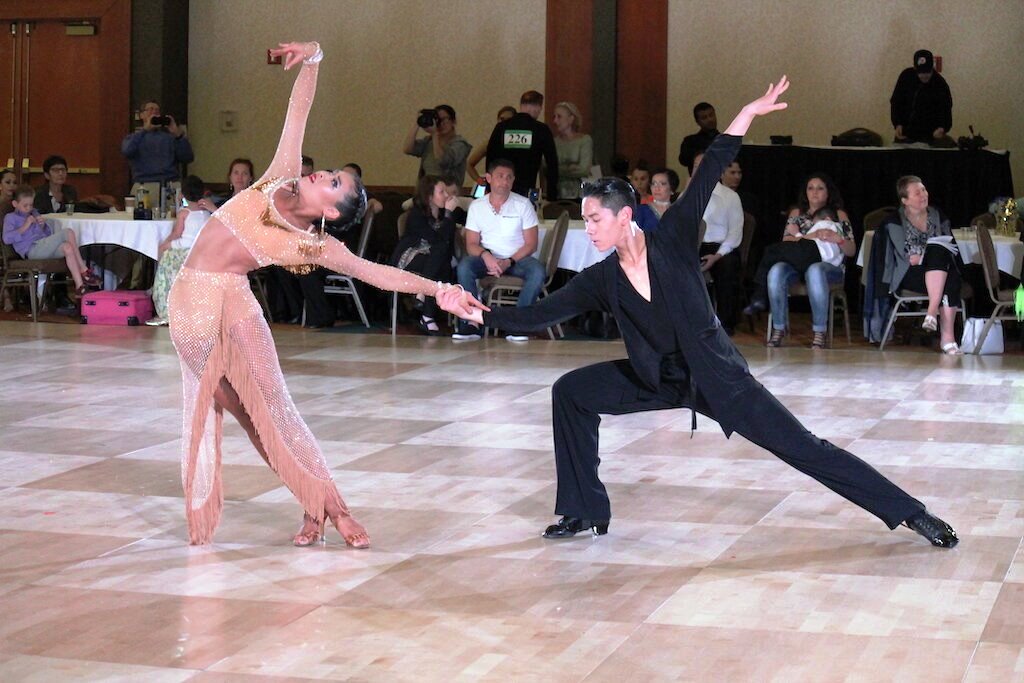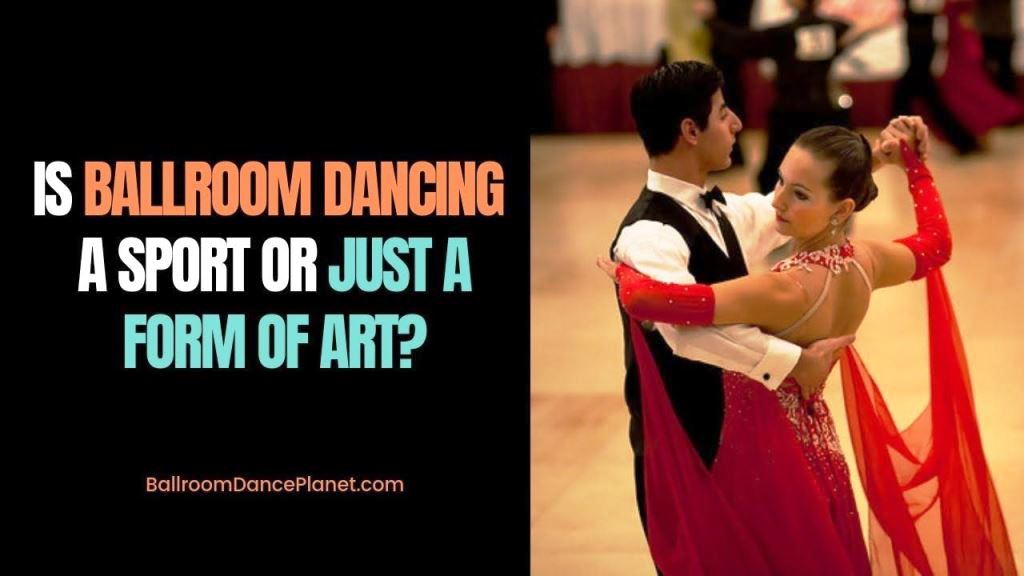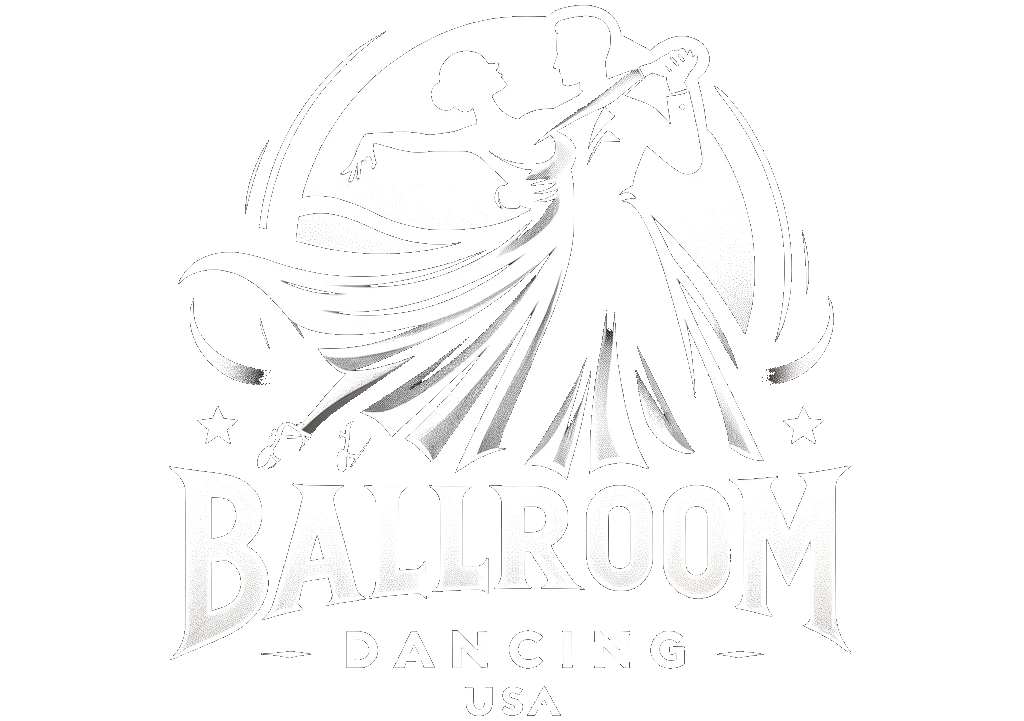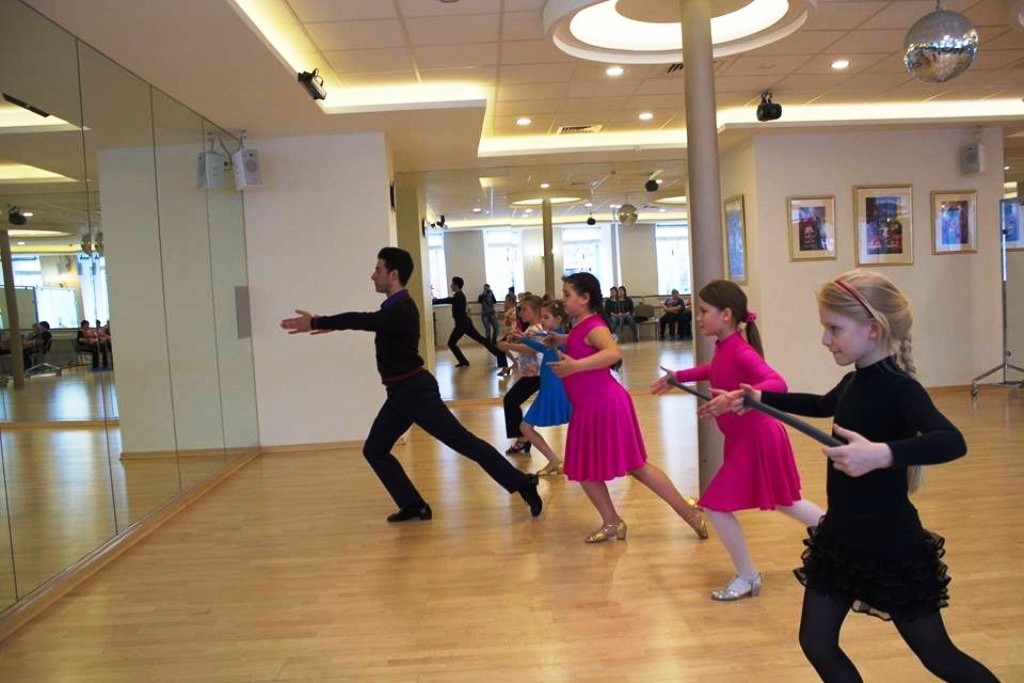
1. Introduction: Definition of Endurance & Its Role in Ballroom Dancing Sports
Introduction: Definition of Endurance & Its Role in Ballroom Dancing Sports
Endurance is the ability to continue performing physical activity for an extended period of time. In ballroom dancing sports, endurance is essential for dancers to be able to keep up with the physical demands of the sport.
Dancers must have the stamina to be able to stay in the game for the duration of the competition, as well as the ability to maintain good technique and form. Endurance is also important for dancers to be able to stay focused and motivated throughout the competition.
Endurance and Technique
Endurance is a key factor in the technique of ballroom dancing. Dancers must be able to maintain a consistent rhythm and tempo, as well as maintain good posture and balance. This requires a great deal of stamina, as it can be physically demanding to keep up with the steps and movements of the dance.
Endurance and Performance
The ability to maintain good technique is also essential for dancers to be able to perform at their best. Dancers must be able to sustain their energy levels throughout the performance, as well as maintain their focus and concentration. If a dancer is not physically fit or does not have the necessary endurance, their performance will suffer.
Conclusion
Overall, endurance is a key factor in ballroom dancing sports. Dancers must have the stamina to be able to stay in the game for the duration of the competition, as well as the ability to maintain good technique and form. Endurance is also important for dancers to be able to stay focused and motivated throughout the competition. With the right amount of training and preparation, dancers can ensure they have the necessary endurance to succeed in ballroom dancing sports.
2. Benefits of Having Endurance in Ballroom Dancing
Benefits of Having Endurance in Ballroom Dancing
Having endurance in ballroom dancing can be beneficial in many ways. Some of the key benefits include:
Improved Performance
Having good endurance can help dancers perform better during long practices and competitions. With improved endurance, dancers can maintain their technique and posture for longer periods of time, resulting in improved performance.
Reduced Risk of Injury
Having good endurance can also reduce the risk of injury. When dancers have good endurance, they are able to maintain proper technique and posture for longer periods of time, which can help prevent muscle strain and fatigue-related injuries.
Increased Stamina
Having good endurance also helps dancers increase their stamina, which can be beneficial for long practices and competitions. With increased stamina, dancers can maintain their technique and posture for longer periods of time, resulting in improved performance.
a. Improved Performance
Improved Performance
Endurance is a key factor in ballroom dancing sports, as it allows dancers to maintain their performance throughout a routine. With the right training and conditioning, dancers can improve their endurance and push themselves to their limits. Here are some tips for improving your performance:
Conditioning
Conditioning is essential for any dancer to maintain their endurance. Regular cardiovascular exercise and strength training can help improve your stamina and reduce fatigue. It is also important to practice proper stretching techniques to ensure your muscles are properly warmed up before a routine.
Nutrition
Nutrition is also an important factor in improving performance. Eating a balanced diet that is rich in carbohydrates and low in fat can help to fuel your body and provide the necessary energy for a routine. It is also important to stay hydrated throughout the day, as dehydration can quickly lead to fatigue.
Rest
Finally, it is important to get enough rest. Not only will this help to recharge your body, but it will also help to maintain your energy levels throughout the day. Make sure to get at least 8 hours of sleep each night and take regular breaks throughout the day to ensure you are well-rested.
b. Better Stamina
Better Stamina
Endurance is an important factor in ballroom dancing sports. Improved stamina can help dancers to perform better and have a more enjoyable experience. Here are some tips to help dancers improve their stamina:
Conditioning
Conditioning is key to improving stamina. Regular exercise and stretching will help dancers build strength and endurance. Cardiovascular exercises such as running, swimming, and cycling are great for improving cardiovascular endurance, which is important for long dances. Strength training can also help build muscle and endurance.
Nutrition
Nutrition is also important for improving stamina. Eating a balanced diet with plenty of fruits, vegetables, and lean protein can help provide the energy dancers need to perform. Staying hydrated is also important, as dehydration can lead to fatigue.
Rest
Getting enough rest is also important for improving stamina. Taking regular breaks throughout the day and getting plenty of sleep will help dancers stay energized and perform better.
c. Increased Focus
Increased Focus
Endurance in ballroom dancing sports not only improves the physical aspects of performance, but also helps to improve focus and concentration. With increased stamina, dancers are able to maintain a higher level of concentration for longer periods of time, which helps to improve their overall performance. This improved focus can help dancers to better remember choreography, and to stay in the moment and focus on the task at hand. Additionally, increased focus can help dancers to better connect with their partner and to respond to their partner’s movements in an appropriate manner. This improved connection can result in a stronger performance overall.
3. How Endurance is Built in Ballroom Dancing
How Endurance is Built in Ballroom Dancing
Ballroom dancing is a sport that requires physical endurance. Building up endurance is essential to performing at a high level and avoiding injuries. Here are a few ways that dancers can build their endurance:
Cardiovascular Training
Cardiovascular training is one of the most important ways to build endurance. This type of exercise helps to strengthen the heart and lungs, which are essential for providing energy and oxygen to the muscles during long and intense dances. Examples of cardiovascular training include running, cycling, and swimming.
Strength Training
Strength training is also important for building endurance. Exercises such as weightlifting and bodyweight exercises help to build muscle and strength, which can help dancers to perform longer and more intense dances.
Stretching and Flexibility
Stretching and flexibility exercises are also important for building endurance. These exercises help to increase the range of motion in the joints and muscles, which can help to reduce the risk of injuries and help dancers to perform longer and more intense dances. Examples of stretching and flexibility exercises include yoga and Pilates.
Rest and Recovery
Rest and recovery are also important for building endurance. Taking time to rest and recover after a long or intense dance can help to reduce the risk of injury and help the body to recover. This can help dancers to perform better in the long run.
a. Proper Training
Proper Training
Endurance is essential for ballroom dancers to be successful in their sport, and proper training is the key to achieving it. Proper training involves more than just practicing the steps; it also involves conditioning and strengthening the body.
Cardiovascular exercises, such as running, cycling, and swimming, are important for improving endurance in ballroom dancers. These exercises help to increase the heart rate and improve the body’s ability to use oxygen efficiently. Additionally, stretching exercises are important for increasing flexibility and range of motion, which can help to prevent injuries.
Strength training is also important for ballroom dancers. Strength training helps to increase muscle strength and endurance, which can help dancers to perform their steps with more power and control. Core exercises, such as planks and sit-ups, are particularly important for ballroom dancers, as they help to strengthen the core muscles which are essential for balance and stability.
Finally, it is important for ballroom dancers to incorporate balance and coordination exercises into their training program. Balance exercises, such as single-leg stands, help to improve balance, while coordination exercises, such as throwing and catching a ball, help to improve reaction time and coordination.
By following a proper training program, ballroom dancers can improve their endurance and performance, and achieve their goals.
b. Proper Nutrition
Proper Nutrition
Proper nutrition is essential for any endurance athlete, and ballroom dancers are no exception. Eating a balanced diet with plenty of lean proteins, complex carbohydrates, and healthy fats will help fuel your body and keep your energy levels up during long practice sessions and competitions.
It is important to stay hydrated throughout the day, and to make sure you are consuming enough electrolytes to replace any lost during exercise. A sports drink such as Gatorade can provide a good source of electrolytes, but make sure to check the label for added sugars.
It is also important to consume enough calories to fuel your body. A general rule of thumb is to consume 10-12 calories per pound of body weight. This can vary depending on the intensity of your exercise, so make sure to check with a nutritionist or dietitian to find out what is right for you.
Finally, make sure you are eating enough food before and after practice and competition. Eating a small snack before exercise can help provide energy and prevent fatigue, while eating a larger meal within an hour after exercise can help replenish your glycogen stores and aid in recovery.
c. Proper Rest
Proper Rest
It is essential to allow your body to rest in order to maintain your endurance and prevent injury. Make sure to take breaks during practice, and get a good night’s sleep before a competition. Additionally, it is important to take time off from dancing for at least one day a week. This will give your body the time it needs to recover and repair itself.
Stretching and Massage
Stretching and massage can help to improve flexibility, reduce soreness, and increase range of motion. Stretching can be done before and after practice and competitions. Massage can help to reduce tension in the muscles and improve circulation.
Nutrition
It is important to eat a balanced diet that includes proteins, carbohydrates, and healthy fats. Eating a variety of nutrient-rich foods will help to fuel your body and provide the energy and nutrients it needs to perform at its best. Make sure to stay hydrated as well.
4. How to Maintain Endurance in Ballroom Dancing
How to Maintain Endurance in Ballroom Dancing
1. Increase Cardiovascular Endurance
The best way to increase your cardiovascular endurance for ballroom dancing is to engage in aerobic exercise. This can include running, cycling, swimming, or any other activity that increases your heart rate and gets your blood pumping. Additionally, you can incorporate interval training into your aerobic routine. This involves alternating between periods of high-intensity activity and low-intensity activity. Doing this will help you to build up your endurance and stamina.
2. Strengthen Your Core and Lower Body
Having strong core and lower body muscles is essential for ballroom dancing. Strengthening these muscles will help you to move more efficiently and with more control. You can do this by doing exercises like squats, lunges, and crunches. Additionally, you can also use resistance bands and free weights to target specific muscle groups.
3. Improve Your Flexibility
Flexibility is an important component of ballroom dancing. Increasing your flexibility will help you to move more freely and with greater control. You can do this by doing stretches before and after you dance. Additionally, you can also use foam rollers and other tools to help improve your flexibility.
4. Practice Proper Breathing Techniques
Proper breathing can help you to maintain your endurance while ballroom dancing. When you are dancing, it is important to take deep breaths and exhale slowly. This will help you to keep your energy levels up and your movements smooth. Additionally, you can also practice diaphragmatic breathing exercises to help you stay relaxed and focused while dancing.
a. Regular Exercise
Regular Exercise
Regular exercise is essential for any ballroom dancer. Not only does it improve physical fitness, but it can also help to develop the endurance needed to maintain the proper technique and posture while dancing.
Cardio exercises, such as running and swimming, can help to increase the dancer’s stamina and endurance. Strength training, such as weight lifting and calisthenics, can help to improve the dancer’s physical strength and flexibility.
Stretching exercises are also important for ballroom dancers. Stretching helps to improve the dancer’s range of motion and flexibility, which can help to prevent injury.
Diet
In addition to regular exercise, a healthy diet is also important for ballroom dancers. Eating a balanced diet with plenty of fruits, vegetables, proteins, and complex carbohydrates can help to provide the energy needed to dance.
It is also important to stay hydrated. Drinking plenty of water throughout the day can help to keep the dancer’s body functioning properly and prevent fatigue.
b. Proper Diet
Proper Diet
Endurance is key to success in ballroom dancing sports and having a proper diet is essential to ensure that your body has the energy and nutrients it needs for optimal performance. Eating a balanced diet that includes a variety of foods from all the food groups, such as fruits, vegetables, whole grains, lean proteins, and healthy fats, is important for providing the energy and nutrients needed for endurance. Additionally, it is important to stay hydrated and drink plenty of water throughout the day.
It is also important to consider the timing of meals and snacks. Eating a light snack or meal 2-3 hours before practice or competition will ensure that your body has the energy and nutrients it needs to perform at its best. Eating too close to the time of the performance can cause fatigue and sluggishness.
Finally, it is important to avoid sugary snacks and drinks, as these can cause a quick spike in energy followed by a crash, which can be detrimental to performance. Eating a balanced diet and staying hydrated will ensure that your body has the energy and nutrients it needs for endurance and performance.
c. Proper Mental Preparation
Proper Mental Preparation
Endurance is an essential component of success in ballroom dancing sports. It takes a great deal of mental and emotional fortitude to stay focused and perform at a high level for a long period of time. Proper mental preparation is key to developing the endurance needed to excel in this demanding sport.
The first step in mental preparation is to set realistic goals. It is important to have a clear idea of what you want to achieve and to have a plan for how you will get there. Setting achievable goals will help keep you motivated and focused on the task at hand.
Visualization
Visualization is another important tool for mental preparation. Visualizing yourself performing well and achieving your goals can help you stay focused and motivated. Visualization can also help you prepare for the physical and mental challenges that you may face during a competition.
Positive Self-talk
Positive self-talk is also important for mental preparation. It is important to remind yourself of your strengths and to focus on the things that you can control. Positive self-talk can help you stay focused and confident, even in the face of challenging situations.
Rest and Recovery
Finally, it is important to make sure that you are getting enough rest and recovery. Proper rest and recovery are essential for physical and mental endurance. Taking time to relax and recharge can help you stay focused and energized for long periods of time.
5. Conclusion: Overview of the Importance of Endurance in Ballroom Dancing Sports
Conclusion: Overview of the Importance of Endurance in Ballroom Dancing Sports
Endurance is a key factor in the success of any ballroom dancing athlete. Without the proper level of endurance, dancers will not be able to perform at their peak, and may even be at risk of injury. Endurance is also important for the mental and emotional wellbeing of the dancer, as it helps to reduce stress and fatigue.
Physical Endurance
Physical endurance is essential for a ballroom dancer, as it allows them to perform at their best for a longer period of time. It also helps to reduce the risk of injury, as the dancer is better able to cope with the physical demands of the sport.
Mental Endurance
Mental endurance is just as important as physical endurance, as it enables the dancer to stay focused and motivated throughout the competition. Mental endurance also helps to reduce stress and fatigue, which can be detrimental to a dancer’s performance.
Emotional Endurance
Emotional endurance is also important for ballroom dancers, as it allows them to stay positive and motivated throughout the competition. Emotional endurance also helps to reduce stress and fatigue, which can be detrimental to a dancer’s performance.
In conclusion, endurance is an essential part of ballroom dancing sports, and is important for both physical and mental wellbeing. Without proper endurance, dancers may not be able to perform at their peak, and may even be at risk of injury.
